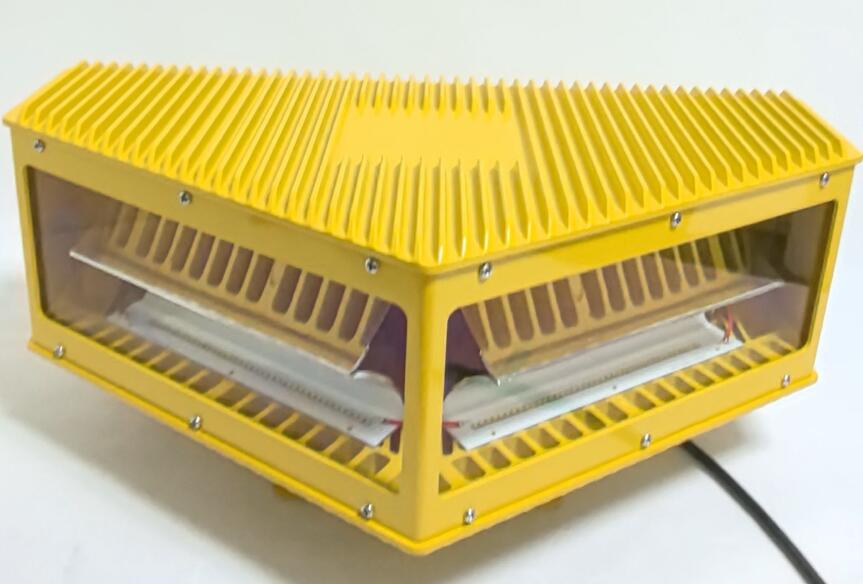Sentinels of the Sky: The Unseen Guardians of Obstruction Warning Lights
In our increasingly vertical world, the skyline is no longer a simple horizon but a complex tapestry of human achievement—skyscrapers, wind turbines, communication masts, and bridges. While these structures signify progress, they also introduce formidable hazards to the navigable airspace. Operating silently and ceaselessly against this risk are obstruction warning lights. These specialized devices are not mere accessories but fundamental components of aviation safety infrastructure, designed to render potential dangers visible to pilots and prevent catastrophic collisions. Their function represents a critical intersection of regulatory compliance, advanced engineering, and the unwavering pursuit of safety in both day and night operations.
The core purpose of obstruction warning lights is to provide unambiguous visual cues that define the presence, and often the extent, of an obstacle. Their application is dictated by stringent international and national aviation regulations, which classify obstacles based on height, location, and proximity to airports or flight paths. The lighting requirements are meticulously detailed, specifying intensity, flash character, color, and placement to ensure universal recognition. This creates a standardized visual language: a pilot navigating from Tokyo to Toronto will instantly recognize the meaning of a steady red light or a specific white flash pattern, enabling immediate and appropriate reaction regardless of geographic location.
A sophisticated classification system governs the use of these lights. Low-intensity obstruction warning lights are typically employed on structures below a certain height or in less critical environments, often emitting a steady red glow. Medium-intensity systems are used for taller structures and can emit either red or white flashing lights, providing greater visibility. For the tallest structures—those exceeding 150 meters—or those located near busy airways, high-intensity obstruction warning lights are mandatory. These powerful beacons project a brilliant white flash during daylight and twilight hours, capable of being seen for many nautical miles, ensuring they pierce through haze and bright ambient light that would obscure lesser lights.
The technological evolution behind these systems has been profound. The industry-wide shift to Light-Emitting Diode (LED) technology has revolutionized their performance and reliability. Modern obstruction warning lights leverage LEDs to achieve superior luminous intensity with significantly reduced energy consumption. Their solid-state design offers exceptional durability, capable of enduring extreme environmental stress, including violent storms, corrosive salt spray, searing heat, and freezing ice. The exceptional operational lifespan of LEDs, often surpassing 100,000 hours, drastically minimizes the need for maintenance—a critical advantage for lights installed on remote mountaintops or offshore wind farms where access is difficult and hazardous.

However, a system of obstruction warning lights is rarely a single point of illumination. Effective obstacle marking requires a holistic strategy. On a tall tower, for instance, high-intensity lights might mark the top, while medium-intensity lights are placed at intermediate levels to outline the structure's silhouette. This multi-tiered approach ensures the obstacle is perceived as a defined object in space, not just a single point of light, greatly enhancing situational awareness for pilots. Furthermore, these systems are increasingly intelligent. They are integrated with photocells for automatic activation at dusk and deactivation at dawn. Many are now part of networked monitoring systems that can perform self-diagnostics, instantly alerting maintenance crews to lamp failures or power issues, thereby ensuring continuous operational integrity.
The challenge of deploying obstruction warning lights extends beyond mere technical installation. A significant and growing consideration is the mitigation of ecological and community impact. The very intensity that makes these lights effective can contribute to light pollution, affecting astronomical observations and disrupting nocturnal wildlife. In response, manufacturers have developed precise optical systems that focus the light beam specifically toward the approaching aviation threat, drastically reducing lateral and upward light spill. The advent of "on-demand" or adaptive lighting systems, which use radar or transponder signals to activate at full intensity only when an aircraft is detected approaching, represents the next frontier in balancing absolute safety with environmental responsibility.
Looking toward the future, the role of obstruction warning lights will continue to expand and evolve. The rapid emergence of unmanned aerial vehicles (UAVs) and the anticipated growth of urban air mobility (UAM) will populate the skies with a new class of aircraft operating at lower altitudes. This will redefine what constitutes an obstacle, potentially bringing countless new structures into the scope of lighting requirements. Future systems may need to communicate not just with human pilots but with autonomous flight computers, possibly integrating transmitters that broadcast precise geospatial data to facilitate automated collision avoidance.
Obstruction warning lights are the silent, vigilant sentinels of the aerial world. Their persistent, rhythmic flashes are a constant pulse of safety in the sky, a non-verbal communication that speaks directly to the aviator's core instinct for self-preservation. They are a masterpiece of focused engineering, born from regulation and refined by innovation, serving the singular, vital purpose of preserving life. As humanity continues to build upwards and explore new frontiers of flight, these luminous guardians will remain an indispensable part of our infrastructure, ensuring that the sky remains a safe domain for all who traverse it.
